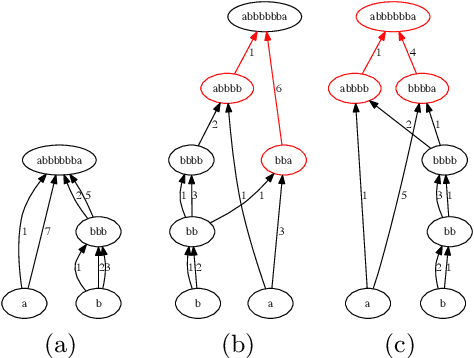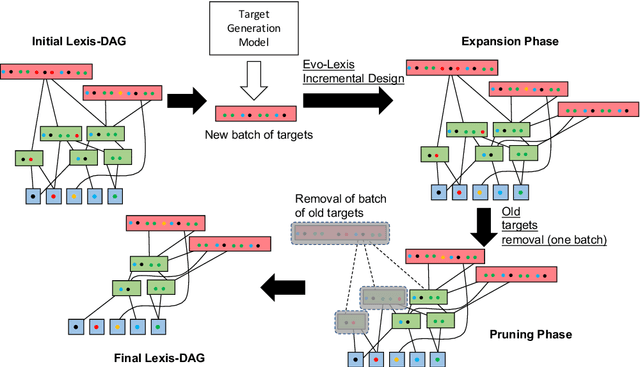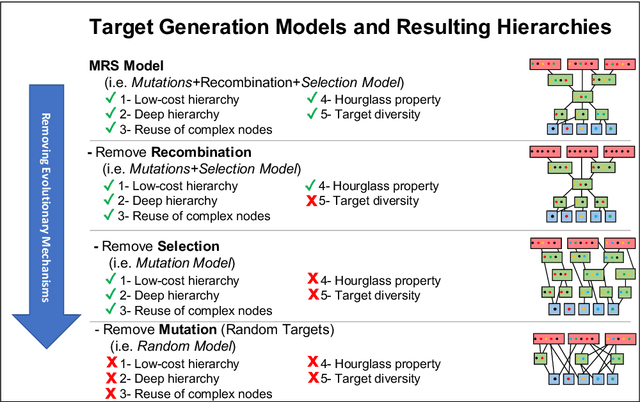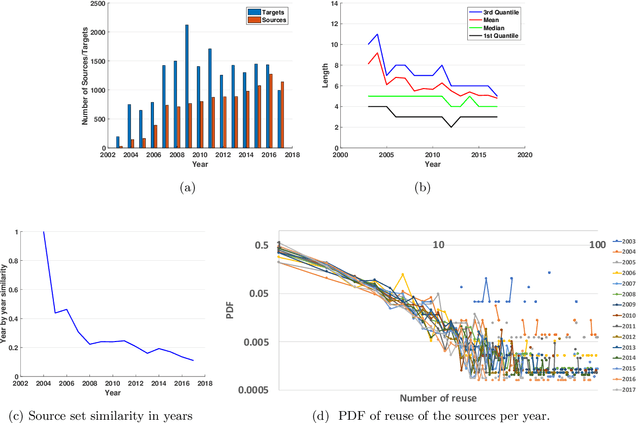Evolution of Hierarchical Structure & Reuse in iGEM Synthetic DNA Sequences
Paper and Code
Jun 06, 2019



Many complex systems, both in technology and nature, exhibit hierarchical modularity: smaller modules, each of them providing a certain function, are used within larger modules that perform more complex functions. Previously, we have proposed a modeling framework, referred to as Evo-Lexis, that provides insight to some fundamental questions about evolving hierarchical systems. The predictions of the Evo-Lexis model should be tested using real data from evolving systems in which the outputs can be well represented by sequences. In this paper, we investigate the time series of iGEM synthetic DNA dataset sequences, and whether the resulting iGEM hierarchies exhibit the qualitative properties predicted by the Evo-Lexis framework. Contrary to Evo-Lexis, in iGEM the amount of reuse decreases during the timeline of the dataset. Although this results in development of less cost-efficient and less deep Lexis-DAGs, the dataset exhibits a bias in reusing specific nodes more often than others. This results in the Lexis-DAGs to take the shape of an hourglass with relatively high H-score values and stable set of core nodes. Despite the reuse bias and stability of the core set, the dataset presents a high amount of diversity among the targets which is in line with modeling of Evo-Lexis.
 Add to Chrome
Add to Chrome Add to Firefox
Add to Firefox Add to Edge
Add to Edge